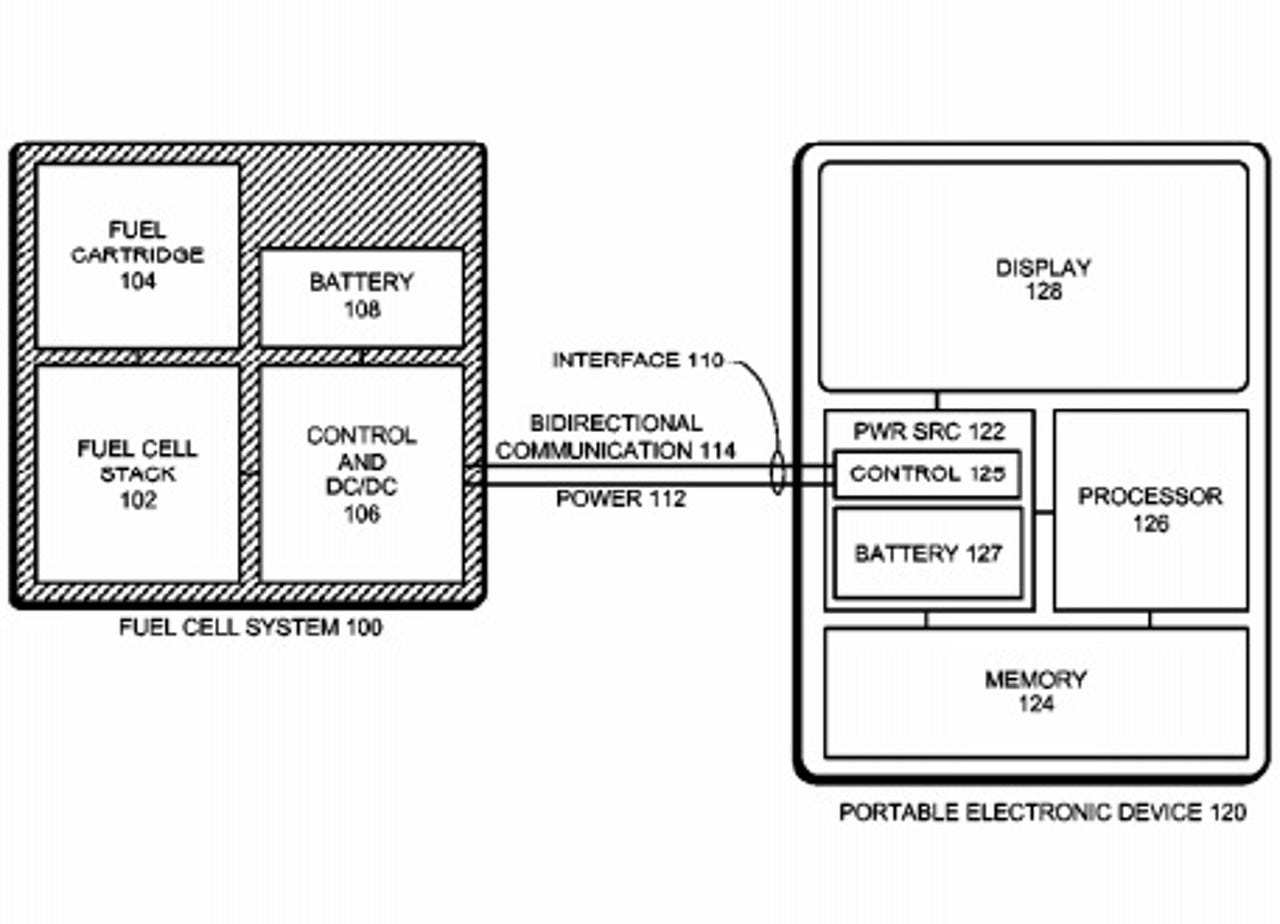Apple granted portable fuel cell power system patent

The United States Patent and Trademark Office (USPTO) has granted Apple a patent for a fuel cell system designed to power mobile devices.
The patent, USPTO patent number 8980491, describes an external fuel cell system with a removable fuel module that could power mobile devices for days, rather than hours.
Unlike batteries, fuel cells convert the chemical energy from a fuel, such as hydrogen, into electricity via a chemical reaction with an oxidising agent, such as oxygen or air, and they typically produce heat and water as the only by-products.
The technology, which has been used by the likes of NASA for decades in the form of alkaline fuel cells to provide power for spacecraft, is receiving increased attention, as it provides an enticing electricity production alternative to traditional power generation methods, many of which are driven by fossil fuels.
Apple's new patent, published by the USPTO on March 18, is for what is described as a "portable and cost-effective fuel cell system for a portable computing device".
The patent describes a fuel cell system that is separate from the portable computing device it would power. It comprises a power module, a fuel stack that converts fuel to power, a controller for the operation of the power module, and an interface connector for the mobile device. This would plug into the device's "bidirectional communication link".
The system could have a detachable fuel cartridge, a fan to cool it, an internal interchangeable battery, and a DC-to-DC converter configure the correct voltage for the mobile device it would be powering.
While hydrogen is a common source of fuel for the technology, Apple's patent outlines a number of potential fuel sources, including sodium borohydride and water, sodium silicate and water, lithium hydride and water, magnesium hydride and water, and lithium borohydride and water, among others -- including liquid hydrogen.
This is not the first time that Apple has delved into fuel cell technology, with the company making moves in 2012 to more than double the number of fuel cells used to generate electricity at its $1 billion datacentre in Maiden, North Carolina, to 10 megawatts.
While a commercially available product based on the freshly granted patent may still be a long way off, Apple is releasing its smartwatch less than 10 months after it was first granted a patent for an "iWatch" device by the USPTO.